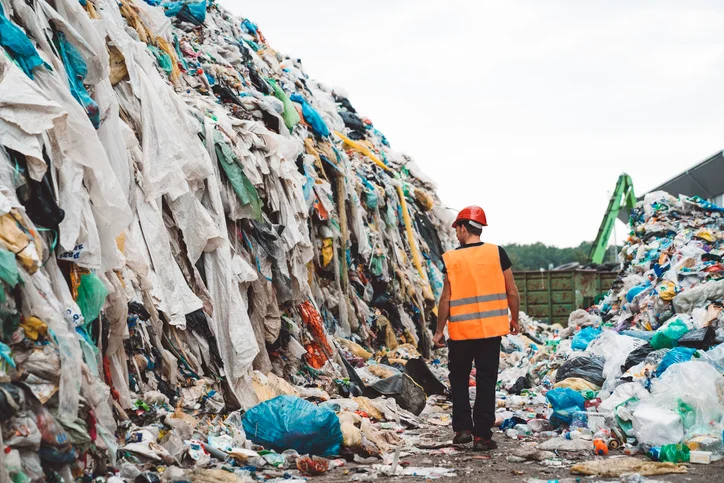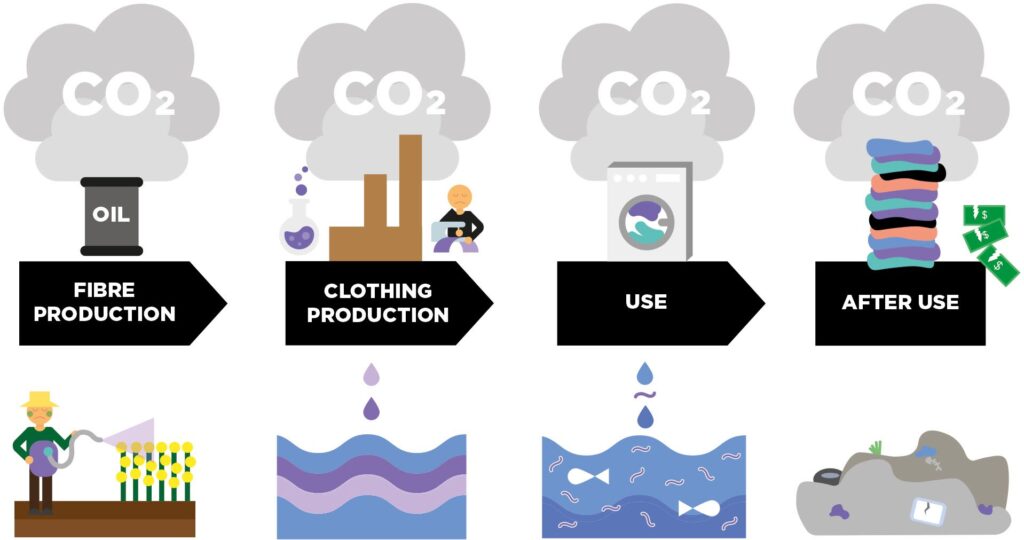Breaking the Fast Fashion Cycle: Embrace Sustainability Through Thrift Shopping
Fashion trends drive the success of fast fashion companies, which design their products based on the latest trends. These trends, however, are fleeting. Fast fashion capitalizes on this by rapidly producing inexpensive clothing consumers purchase to stay current. As trends change, consumers discard these clothes, contributing significantly to waste. Each year, out of the 100 billion garments produced, 92 million tons end up in landfills. To give you an idea of the scale, it’s equivalent to a garbage truck full of clothes being discarded every second. If this pattern persists, fast fashion waste could escalate to 134 million tonnes annually by the end of the decade (Igini, 2023). This cycle of consumption and disposal is a hallmark of the fast fashion industry.
As discussed in “An Analysis of the Fast Fashion Industry,” the model is predicated on rapid production cycles that respond to consumer demand for trendy, affordable clothing (Linden, 2016). This results in a staggering amount of waste as consumers frequently update their wardrobes. Fast fashion items are designed to be low quality and disposable, usually enduring only a few washes before deteriorating. This disposability means garments are quickly discarded, often ending up in landfills.
It’s time to break the cycle of fast fashion. Discover your unique style and make a positive impact on the environment by shopping at thrift stores. By choosing second-hand clothing, you can enjoy fashionable outfits without contributing to the waste generated by fast fashion. I have developed a thrift campaign with the local thrift store at Rutgers to show my classmates that there is a way to be fashionable using second-hand clothing. This initiative is part of my #becreativesustainably campaign for Second Reformed Thrift. Shop at thrift stores to find clothing that matches your style while minimizing the negative impact of fast fashion. Join us in making sustainable fashion choices today!
#becreativesustainably Initiative
I developed this campaign my final year at Rutgers, to empower the sustainable fashion industry by promoting thrifting and eco-friendly practices. Each outfit in this campaign was hand-selected from my local thrift stores, inspired by the Y2K movement. I wish to engage my community in sustainable clothing alternatives through these creative outfits as they search for a reason to head to their local thrift store.
I designed each post to include specific features aimed at maximizing engagement and driving traffic to the Instagram page. For each outfit, I crafted catchy captions, selected relevant hashtags, tagged each featured model, and included a location to enhance engagement and visibility on the post.
kisses to those who shop sustainably Shop sustainably in our store Wednesdays and Fridays 12-4 where u can find gems like these star-studded, cowboy boots #becreativesustainably #rutgers #thrift
SecondReformedThrift
These short clips, featuring trending TikTok songs, were edited using CapCut, the video editing app. Firstly, utilizing TikTok songs in videos is advantageous due to their viral nature within digital culture. TikTok songs often become cultural phenomena, spawning trends that capture the attention of a vast audience. By incorporating these songs into videos showcasing sustainable outfits, brands can tap into existing trends that already resonate with their target demographic. This not only increases the likelihood of content discovery but also encourages sharing among viewers who are actively seeking out or participating in these trends.
The entertainment value of videos set to popular music cannot be overstated. Such content tends to captivate viewers quickly and keep them engaged throughout the video’s duration. This engagement translates into higher interaction metrics such as likes, comments, shares, and overall views. It also positions the brand as culturally relevant and in tune with current trends. Creatively showcasing sustainable products through these videos enhances the brand’s storytelling capabilities.
I will continue to inspire people to thrift and contribute to a less wasteful future. Together, we can make a significant difference in promoting sustainable fashion choices. Join us in this movement and help pave the way for a more eco-friendly world.
Contant, F. (2023). Fashion hour? How social media plays a role in fashion trends and what’s hot in 2023! Impact. https://www.palomar.edu/impactmagazine/2023/05/11/fashion-trends-palomar-2023/
Gazzola P, Pavione E, Pezzetti R, Grechi D. (2020). Trends in the Fashion Industry. The Perception of Sustainability and Circular Economy: A Gender/Generation Quantitative Approach. Sustainability. 12(7). https://doi.org/10.3390/su12072809
Linden, & Radner, A. (2016). An Analysis of the Fast Fashion Industry. Senior Projects Fall 2016. 30. https://digitalcommons.bard.edu/senproj_f2016/30
Bick, R., Halsey, E. & Ekenga, C.C. The global environmental injustice of fast fashion. Environ Health 17, 92 (2018). https://doi.org/10.1186/s12940-018-0433-7



